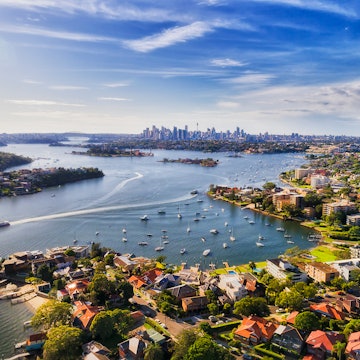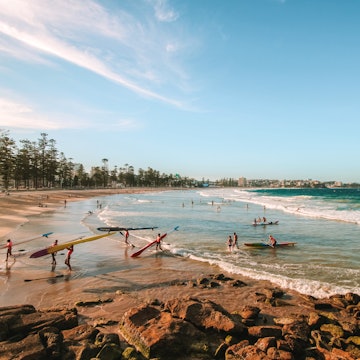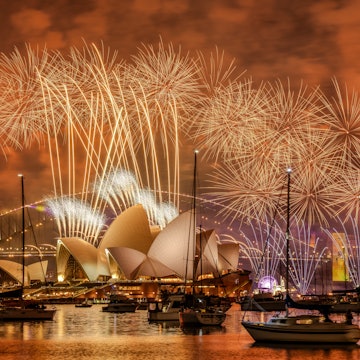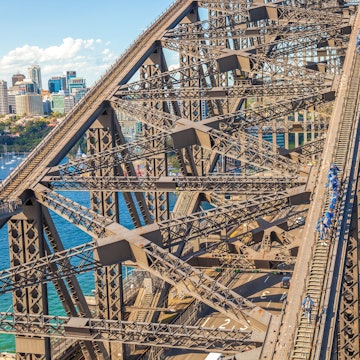
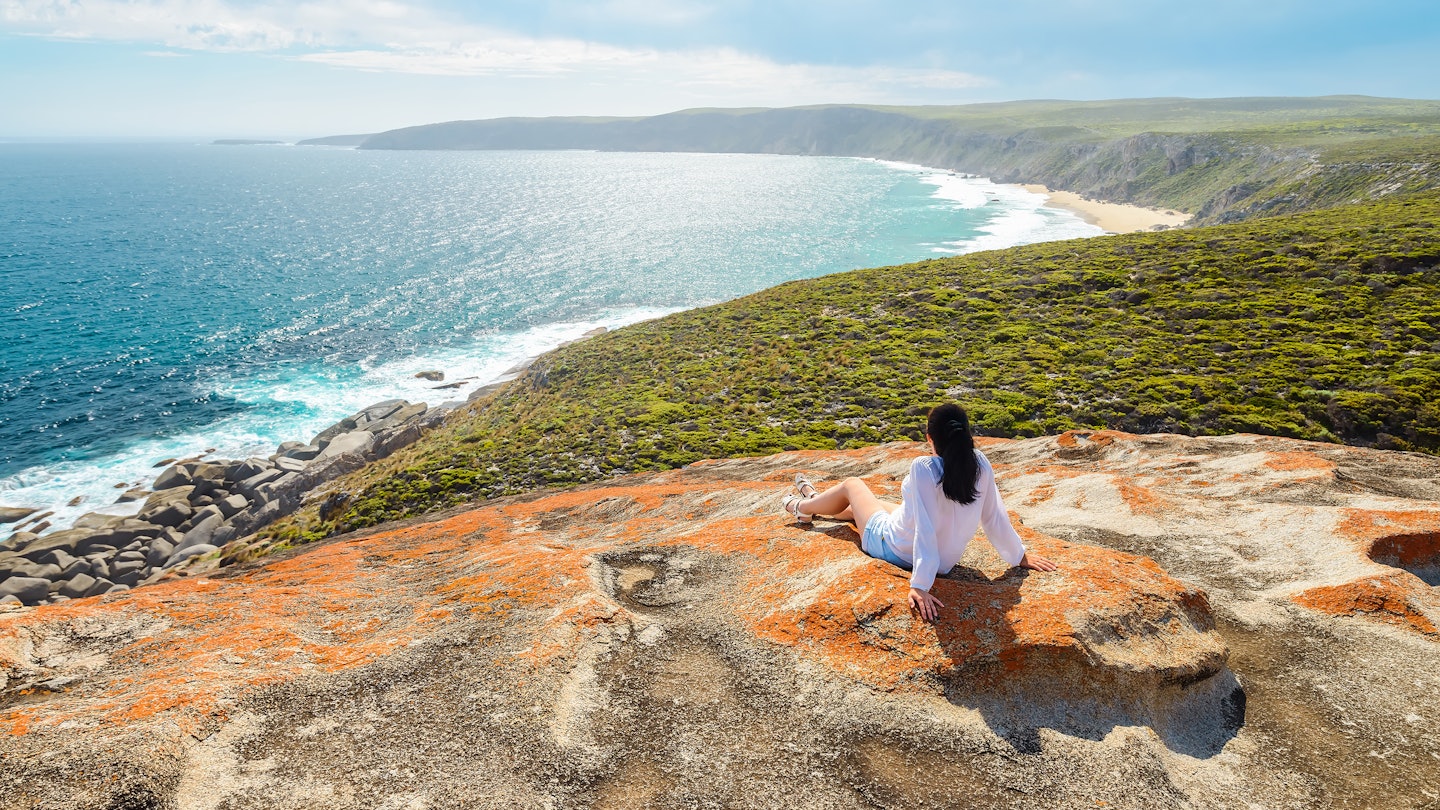
Stretch your budget further in Australia with these money-saving tips. myphotobank.com.au/Shutterstock
Australia – with its wallpaper-worthy landscapes, vibrant cities, and unique wildlife – is a dream destination for many. Unfortunately, while Australia is known to be laid-back, it is not known as a budget destination. Even locals find the cost of living a hard pill to swallow.
Ultimately, how expensive Australia feels will depend on the exchange rate of the Australian dollar with your home currency.
Whether you’re in Sydney, Perth (or an outback location in between), food, activities and especially accommodation can add up quickly. However, with careful planning it is possible to keep costs reasonable on a trip to Australia.
Here are our top money-saving tips along with a guide to daily costs.
A guide to daily costs
Shared bunk room in a hostel: AU$40–80 (US$25–50)
Basic room for two: AU$180–250 (US$110–155)
Single fare on public transport: AU$2–4 (US$1.25–2.50)
Coffee: AU$5 (US$3.15)
Bacon and egg roll for breakfast: AU$8–12 (US$5–7.50)
A classic Aussie meat pie: AU$6 (US$3.80)
Dinner per person, excluding drinks: AU$30–60 (US$19-38)
Beer in pub: AU$5–9 (US$3.15-5.65)
Cocktail: AU$15–25 (US$9.40–15.60)
Total average daily cost: AU$200–300 (US$125–190)
1. Plan your trip during the off-peak season
Australia's peak tourist season falls during the southern hemisphere's summer. This makes December to February the most expensive time to visit Australia.
Consider traveling during the shoulder seasons of spring (September to November) or autumn (March to May), instead when you're more likely to score a deal on accommodation, domestic flights and even tours. As most accommodation providers – particularly in urban centers – rely on dynamic pricing, these months are when you’ll be more likely to find a room for a reasonable price. The same is true of seats on domestic flights and tour buses.
The shoulder season is also a great time to discover offbeat Australian festivals timed to coincide with the changing seasons, such as Tasmania’s winter solstice celebration, Dark Mofo, or cherry-picking events in Victoria’s Yarra Valley.
2. Sydney is not always the cheapest city to fly into
Sydney is considered the gateway to Australia, but it’s not the only city with an international airport. You might be able to save a chunk of change if you fly directly into Melbourne, Brisbane or Perth instead.
You'll find that domestic airfares within Australia are surprisingly budget-friendly (although their higher environmental cost also bears consideration). One-way flights between Melbourne and Sydney retail for as little as AU$59 (US$37) if you time it right. You can expect a slightly higher level of service and more inclusions when flying with Australia’s budget airlines (including Jetstar) than you may have experienced with low-cost carriers in other regions.
Another money-saving option is to consider a flight package. Qantas, Australia's largest airline, often has travel deals that include airfare, hotels and car hire. You can use its multi-city trip planner to budget domestic travel within Australia.

3. The cheapest places to eat are markets, pubs and food trucks
Australia's big cities have top-notch restaurants, but they can be pricey and are likely to be a stretch too far for budget travelers. Instead, opt for the lively markets in laneways, parks, and historic sites. Savor street food, like Thai and Greek delights, at Melbourne's Queen Victoria Market or explore Sydney's Chinatown night markets on Fridays, with dishes starting at just AU$5 (US$3.15).
If you're in regional areas, weekends are a treat with farmers' markets offering everything from freshly baked pastries and picnic supplies to souvenirs to take home.
For more wallet-friendly dining, keep an eye out for food trucks – they're everywhere. In Darwin, Parap Village Markets serves up some of the best laksa (Malaysian noodle soup) in Australia, while Sydney and Brisbane have a variety of options from Texas BBQ to Filipino fare.
And if you're in the mood for a classic Aussie meal, check out local pubs. Most will offer a daily special, like a AU$12 (US$7.50) chicken parmigiana or a AU$10 (US$6.30) burger with chips (fries). Finally, before you balk at prices for mains, remember that they include tax, and tipping isn't customary; what you see on the menu is what you pay.
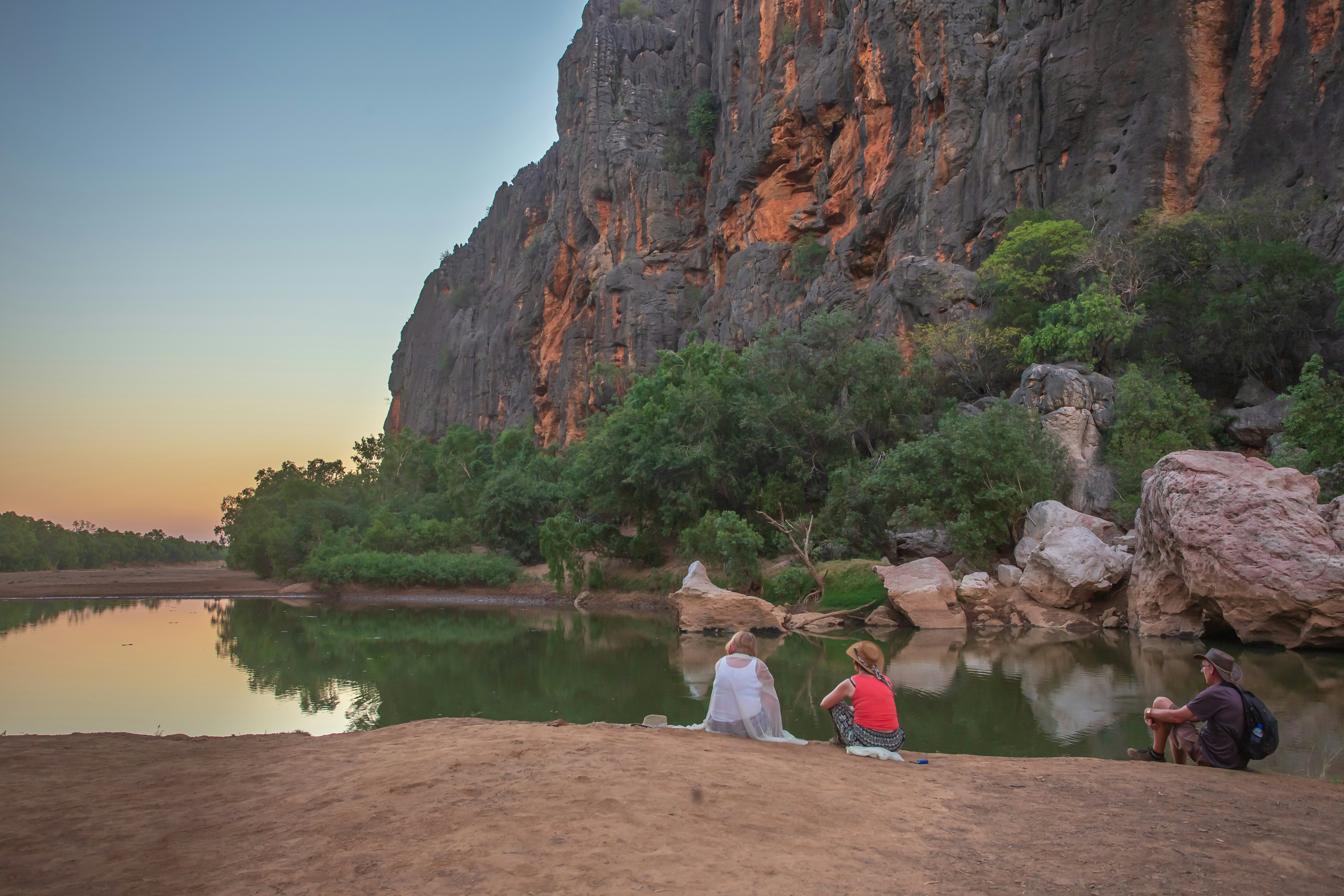
4. Australia's best attractions are free
In Australia, the real treasures lie outdoors on captivating beaches, coastal walks, and mountain trails. There are over 600 national parks and while a handful charge an entrance fee, most are free to explore.
There are also hundreds of cost-free museums and attractions across the country, including the Australian Museum in Sydney and the National Gallery of Victoria. Some may request donations or provide free entry only during specific hours, check online before you go.
Another option is to join a free walking tour that delves into local history and iconic landmarks. In Brisbane, volunteers spend two to three hours guiding visitors through the city; the Sydney Sights tour leads you around neighborhoods and to famous places, like the Sydney Opera House; and in Melbourne, a Culture Capital tour takes you deep into the city’s labyrinth of laneways and arcades. While these tours may advertise themselves as "free," they often run on a tips basis or "pay what you think it's worth", so keep in mind that guides are usually also expecting a financial contribution for their time and expertise.
If you’re having trouble finding a tour, ask at an information center or chat with the booking desk or concierge where you're staying. Just remember to book your spot for these tours in advance.
For popular tourist attractions, consider investing in a multi-attraction combo pass. Sightseeing Pass Australia, for example, offers discounts for attractions in South Australia and Western Australia, while Sea Life Sydney’s Pass will save you up to 50% on other nearby sights. Alternatively, scout for discounts on platforms like Klook, Red Balloon and Adrenaline to make the most of your sightseeing adventures.
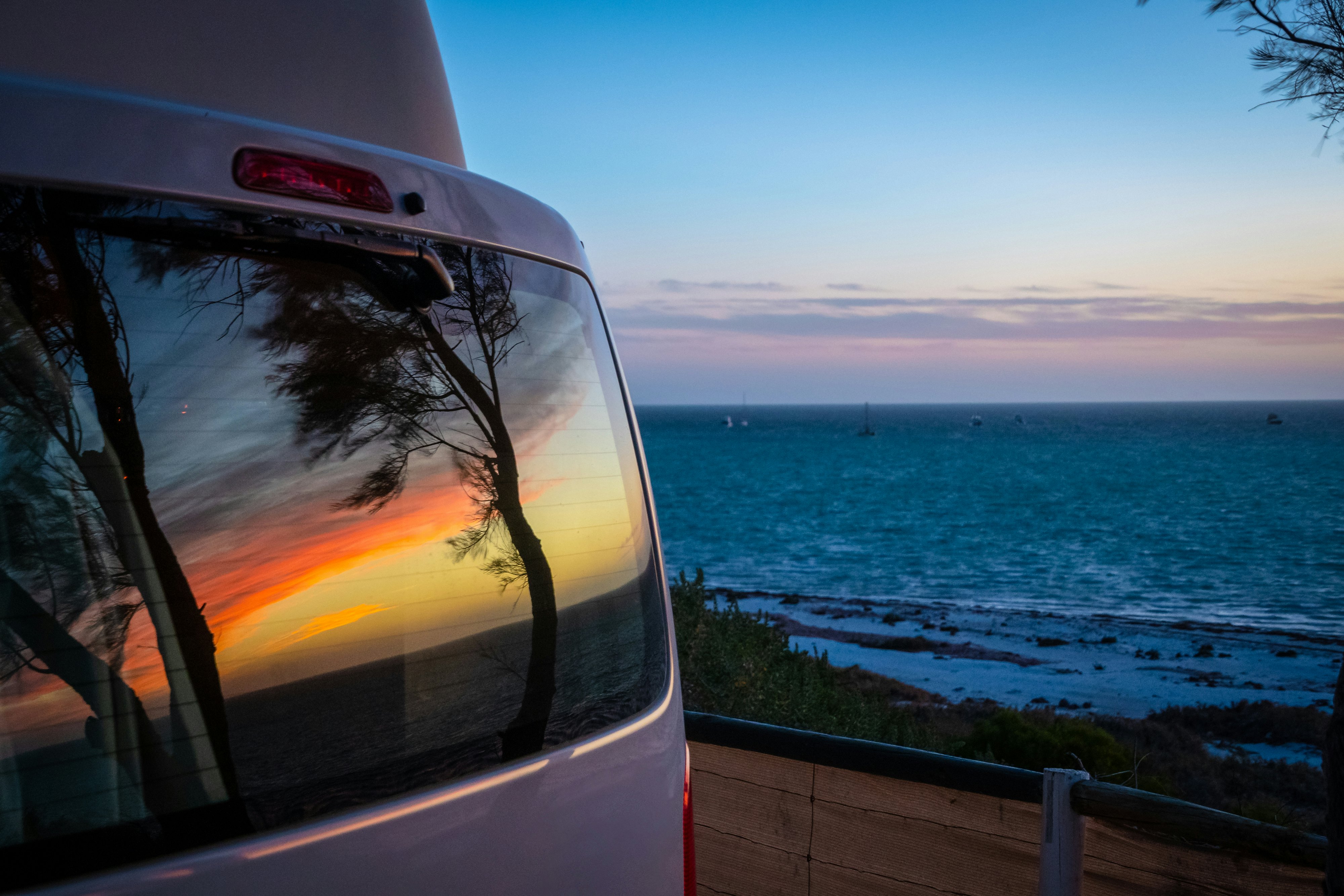
5. Hire an RV or campervan for cheap accommodation and travel
Whether it's a road trip through the outback or along the coast, the best (and sometimes only) way to see Australia is by car. To explore efficiently, consider hiring a camper instead of a traditional car rental. Campervans provide affordable accommodation on wheels, with nightly fees at caravan parks averaging around AU$30 (US$19) for unpowered sites, and upwards of AU$40 (US$25) for powered spots (although you may find even better deals on private land through Hipcamp).
There are also free campsites available throughout the country, offering an authentic, off-the-beaten-path experience. These can be found using apps such as WikiCamps Australia and CamperMate. If you go this route, prepare for minimal amenities; some spots lack toilet facilities or access to clean water.
Van rental costs start at approximately AU$40 (US$35) per day, depending on the model. Camplify (which is like Airbnb for motorhomes and vans) has an under $100 section, making it easy to pick your next home on wheels within budget. Jucy Rentals is another option, best suited to road trippers on a backpacker budget.
While you’ll save on accommodation, bear in mind that petrol (gas) is expensive in Australia. Prices fluctuate, a liter of fuel was just below AU$2 (US$1.25) in Sydney at the time of writing.
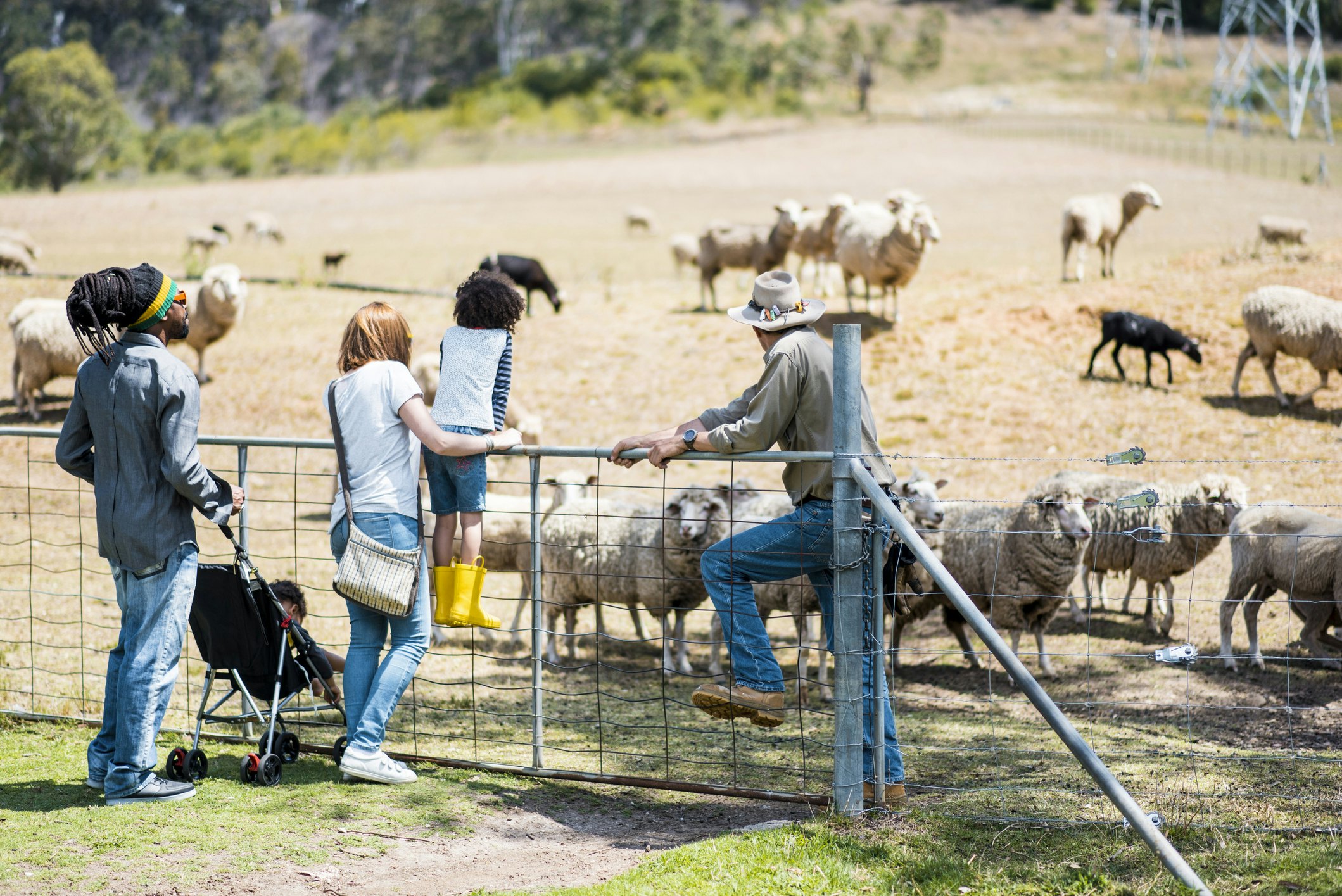
6. Consider a farm stay for a different perspective
Australia is witnessing a rise in the popularity of rural farm stays among travelers. Whether visiting a region for a month or a weekend, you can book a tiny house on a cattle station or sleep in a chic converted shearing shed. They can sometimes be cheaper than hotels, with a breakfast typically included. Most importantly, they double as a free attraction for the whole family, as many farm stays encourage guests to pet the horses or feed the cows.
To find them, use Hipcamp or Booking.com's "farm stay" filter. While some farm stays can be upwards of AU$600 (US$380) for a luxe glamping experience, some cost less than AU$250 (US$165) per night for an entire cottage to yourself. Many tourist-facing farmstays, such as the Tweed's Hosanna Farmstay, double as campgrounds with sites from AU$21 (US$13) a night and huts from AU$125 (US$78).
7. Work or volunteer while you travel
A working holiday visa in Australia can be a savvy move to explore Australia's culture and breathtaking scenery while padding your wallet. Available for visitors between the ages of 18 and 30 (and up to 35 in some cases) from eligible countries, these visas allow you to work as a tourist in Australia.
Housesitting is another option for travelers. You get to stay for free in great homes across Australia, in exchange for looking after the house, and possibly pets too, while the owners are away. Aussie House Sitters and Mindahome.com both list available house sits; there is a small membership fee to join, but it’ll pay off in accommodation savings if you land a housesitting gig.

8. Bring your own wine to dinner
Australia has steep taxes on alcohol, resulting in high prices. Expect to pay AU$13 (US$8) for a glass of house wine. To lessen the blow on your budget, opt for happy hour drinks when cocktails are just AU$15 (US$9.50) and tap beers will start at AU$5 (US$3.15). Many places also offer food deals like AU$10 (US$6.30) nachos and AU$5 US$3.15) fries.
For a budget-friendly dinner with drinks, some restaurants – particularly Chinese, Italian, and Mediterranean ones – will allow you to bring your own bottle of wine. This will typically be advertised in the restaurant’s front window, with a nominal corkage fee of around AU$3 (US$1.90)). Although if you walk in with a “goon” bag (a four-liter bag of wine, which will set you back about AU$13/US$8) you might turn some heads.
9. Join a group tour
A common oversight among travelers is underestimating Australia's vast size. With a population of just 25 million, its landmass rivals that of the United States. Travel times – particularly to remote regions – aren’t just critical to your itinerary; they’ll also affect your bottom line.
This is when group tours – which cover lodging, food, transportation, and experiences – can be particularly good value, especially for destinations such as Uluru-Kata Tjuta National Park and K’gari (Fraser Island). Tour operators are typically able to negotiate lower group rates for their guests, saving you not just time and effort in planning, but money as well.












